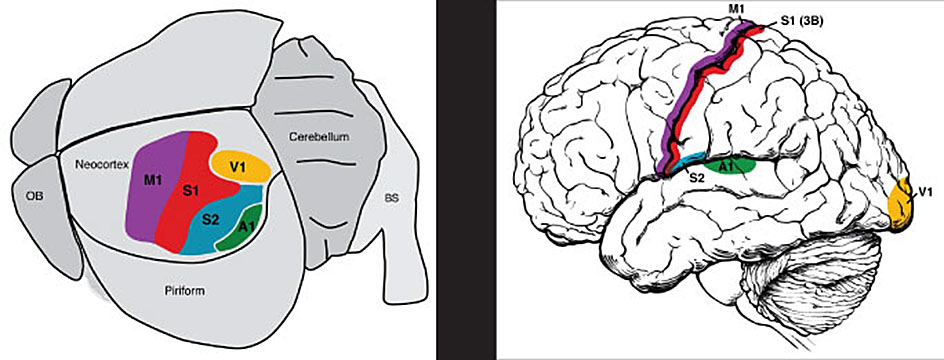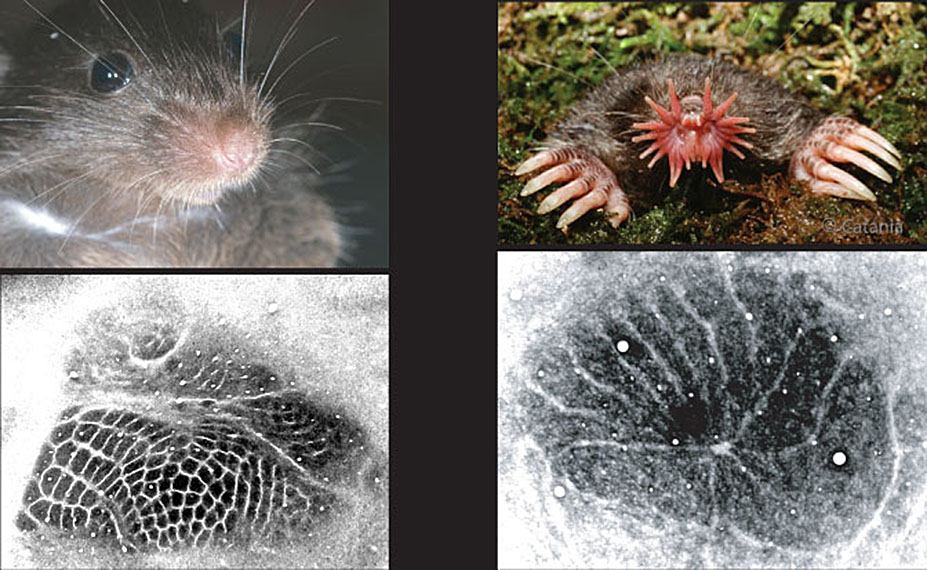
Fossils show that the earliest mammals had small brains with little neocortex, much like the shrew brain shown on the left. How were these early brains organized and how have they changed in the course of evolution? Because fossils cannot tell us about the internal organization of ancient brains, evidence must come primarily from comparative studies of existing species. Along with a number of other laboratories around the world, we investigate how neocortical sensory areas are organized in diverse spieces to help determine characterisitics that are common to most mammal lineages (and thus likely conserved from early mammals) or alternatively unique to some taxa, and thus likely to be more recently evolved traits. The comparison of shrew and human neocortex illustrated below provides an example of this approach.

Although shrews have the smallest mammal brains and are distantly related to primates, both shrews and humans share cortical areas that likely existed in the common ancestor to mammals. These areas include primary motor cortex (M1), primary somatosensory cortex (S1), secondary somatosensory cortex (S2), primary visual cortex (V1) and primary auditory cortex (A1).
Another level of analysis includes investigation of the modules and subdivisions found in different cortical areas. Both mice and star-nosed moles exhibit subdivisions representing the important sensory organs on the face. For mice (bottom left) the “cortical barrels” correspond to the representation of the important facial whiskers. In moles (bottom right) a stripe corresponds to the representation of each sensitive nasal ray.

Barrels, stripes, and the septa that seperate them likely form as a result of conserved developmental mechanisms that depend on correlated neuronal activity from a sensory sheet to form connections within modules. Each module represents a different area in sensory space, and thus neurons within each module are likely to share receptive field properties and unique connections to other brain areas. Such modules provide clues to the general organizing principles for mammalian neocortex.
